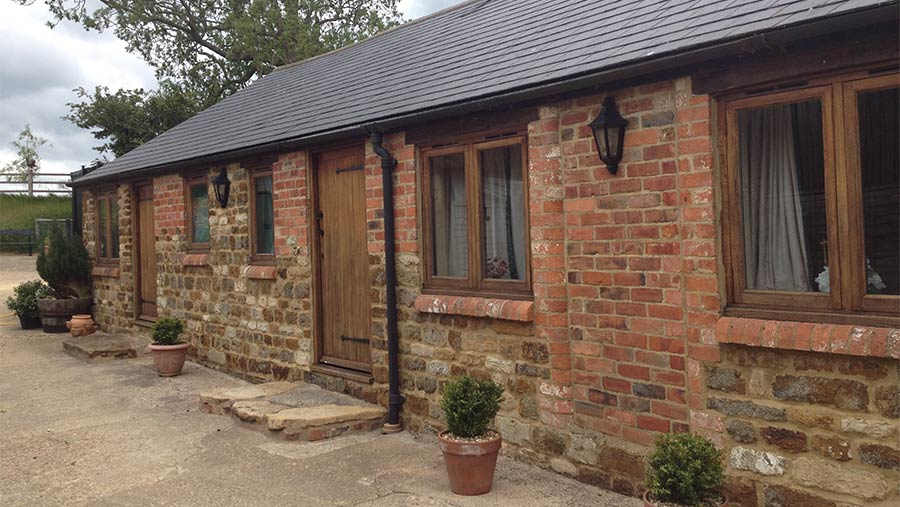Advice on gaining planning permission for listed buildings
 © Berrys
© Berrys Owners of buildings with special interest must fully understand their assets and their options before applying for planning permission to avoid being stymied by their status.
The team at Berrys has seen an increase in enquiries on this subject recently as farmers seek to diversify and generate new sources of income.
Val Coleby, partner and planning manager, and Phoebe Farrell, heritage consultant, explained how the process works.
See also: What you need to check before modifying old farm buildings
What is a listed building?
A listed building is a structure that is protected from being demolished or altered without special permission, due to its special architectural and historic interest.
The older a building is, and the fewer surviving examples of its kind, the more likely it is to be listed.
There are three types of listed status for buildings in England and Wales:
- Grade I: buildings of exceptional interest
- Grade II*: particularly important buildings of more than special interest
- Grade II: buildings that are of special interest, warranting every effort to preserve them – the vast majority of listed buildings are in this category
Other buildings in close proximity may be curtilage listed and have similar protection, to help preserve the sites around listed buildings.
How can you find out if a building is listed?
Listings can be searched by address or map on Historic England’s website.
“Buildings can be put forward for listing by anyone, not just Historic England or the council,” says Ms Farrell.
“Ask for advice if you think yours is worthy of being listed.”
How to apply for planning permission
If you own a listed building, you can still apply for planning permission, but the process is more complicated.
Planning applications for listed buildings need to go hand in hand with an application for listed building consent, and generally, local planning authorities will determine both applications at the same time, says Ms Coleby.
Anything that affects the fabric of a listed building will require listed building consent.
“You will always need a heritage statement when applying for works to a listed building to provide evidence you have considered the impact on the listed building and, if necessary, what you have done to mitigate that,” says Ms Farrell.
“Generally, you need a more detailed application and drawings for listed buildings, such as joinery details.”
What to look out for
Seek advice from a heritage consultant in the first instance, as this will save you money in the long run, says Ms Farrell. The design of the conversion is important and an architect will be able to design the internal layout to make the most of existing features.
A planning consultant’s view on the conversion and how it aligns with current planning policy in the area is also useful, says Ms Coleby.
When applying for listed building consent, the insight of a specialist will help identify the significance of the structure, the attributes that need to be conserved, and what has the capacity for change.
Preventing refusals
Before making any decisions, understand both what you have and what will enhance or help conserve the building – then you can try to merge your visions and your brief with this, says Ms Coleby.
If planning permission is refused, an appeal can be made through the Planning Inspectorate.
No amendments can be made to a listed building consent, but the application is free.
Rise in applications
There has been a recent upswing in enquiries about planning permission for listed buildings, says Ms Coleby.
“This may be a response to ensuring farms have various sources of income through diversification,” she says. “There is also likely to be a larger market for holiday lets, as we enter the staycation era, with few people willing to risk a flight abroad.”
Case study
One of Berrys’ clients in Northamptonshire recently won a diversification award for their on-farm holiday accommodation.
The dairy farm was established in the 17th century and has a number of historic buildings, including a Grade II listed house and threshing barn.
The holding is adjacent to a Grade I listed church, which includes three Grade II* listings for headstones within the graveyard.
The family were able to convert the listed barns into holiday lets and build a new range of accommodation in a traditional style within the former farmyard.
The next stage is to turn the listed granary into a wedding venue.
